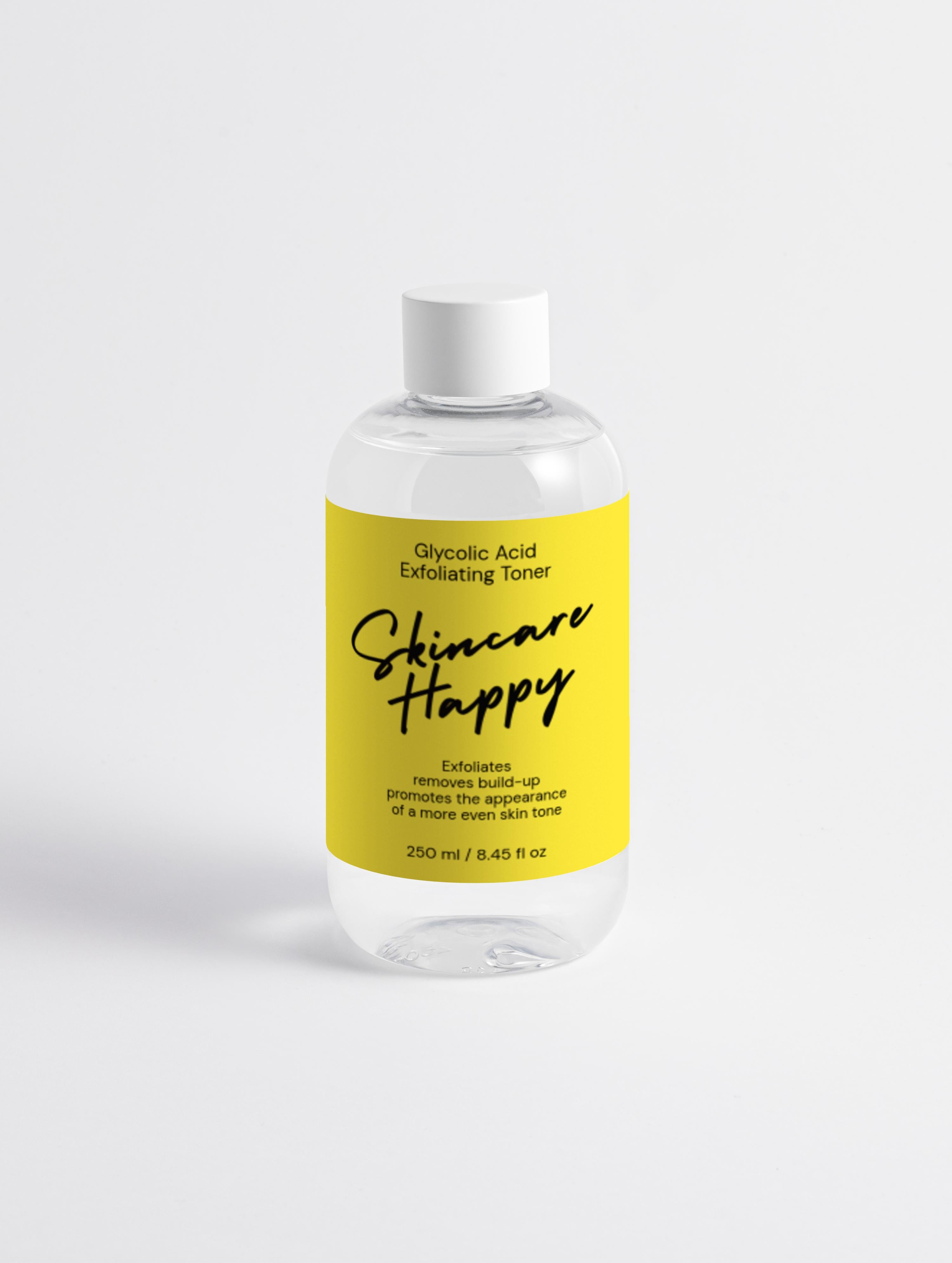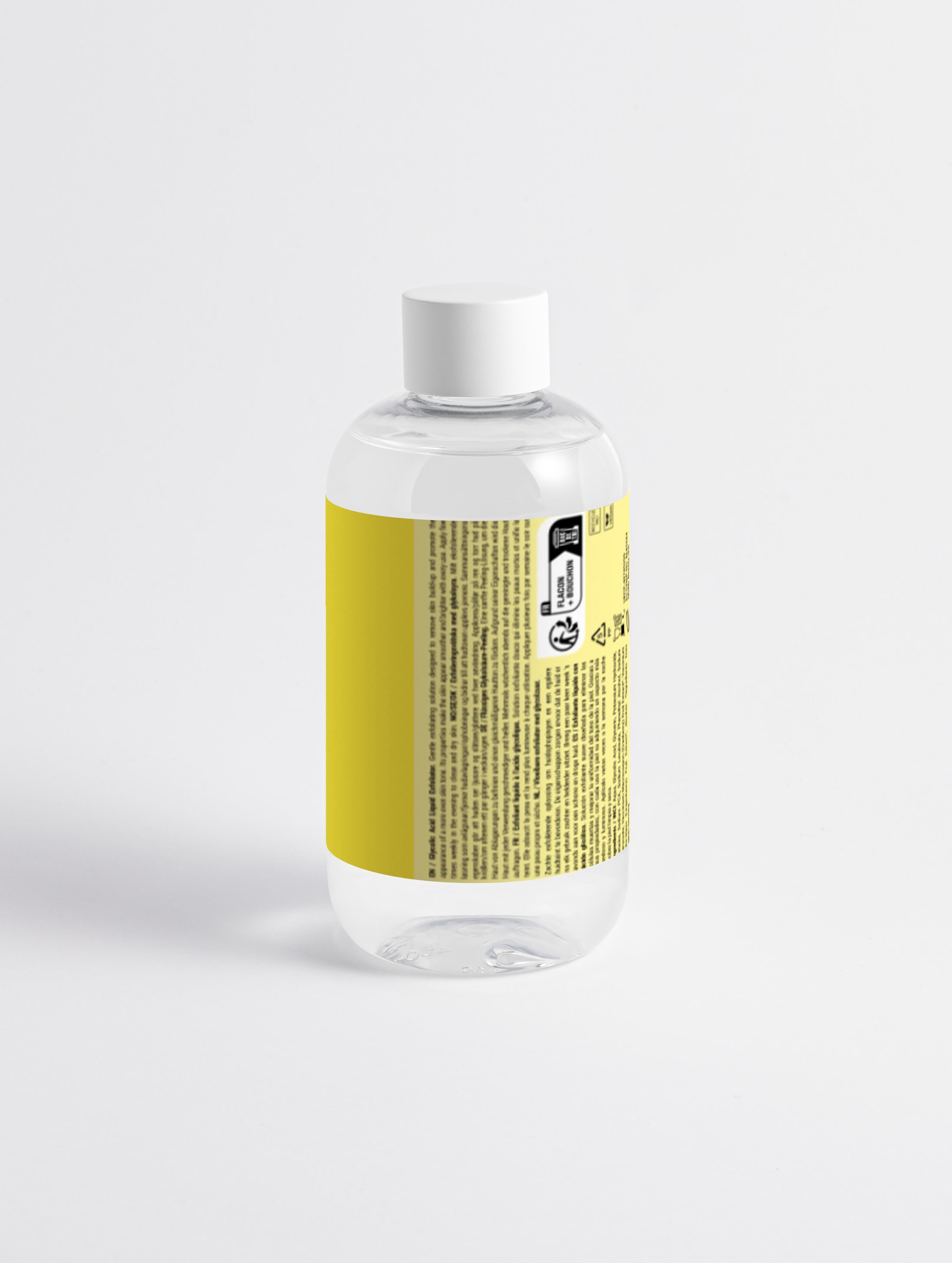I. Introduction
A. What is Exfoliation in Skincare?
Exfoliation is a crucial step in any skincare routine. It involves removing dead skin cells from the skin’s surface to reveal fresher, smoother skin underneath. This process helps to unclog pores, prevent acne, improve skin texture, and allow better absorption of other skincare products.
B. Why Choosing the Right Exfoliant Matters
Not all exfoliants are created equal. The wrong exfoliant can irritate your skin, worsen existing conditions, or damage your skin barrier. That’s why understanding your skin type and the available exfoliating options is essential to achieving healthy, glowing skin.
C. A Quick Overview of Glycolic Acid and Other Exfoliants
Among chemical exfoliants, glycolic acid stands out as a powerhouse ingredient. But it's not alone—others like salicylic, lactic, and mandelic acids also serve unique purposes. Physical exfoliants, including scrubs and brushes, offer mechanical exfoliation. Each type has its place, and this guide will help you navigate them all.
II. What is Glycolic Acid?
A. Definition and Origin
Glycolic acid is an alpha hydroxy acid (AHA) derived from sugar cane. It has the smallest molecular size among AHAs, which allows it to penetrate the skin deeply and work efficiently.
B. How It Works on the Skin
It dissolves the bonds between dead skin cells on the skin's surface, encouraging their removal and accelerating cell turnover. The result? Brighter, smoother skin with improved tone and texture.
C. Benefits of Using Glycolic Acid
-
Fades hyperpigmentation and dark spots
-
Reduces the appearance of fine lines and wrinkles
-
Unclogs pores and helps prevent acne
-
Enhances skin glow and texture
-
Boosts collagen production over time
D. Potential Side Effects
When overused or used incorrectly, glycolic acid may cause:
-
Redness or irritation
-
Increased sun sensitivity
-
Dryness or peeling
Always start slowly and follow up with SPF.
III. Other Types of Exfoliants
A. Chemical Exfoliants
1. Salicylic Acid (BHA)
Oil-soluble, perfect for acne-prone and oily skin. Penetrates pores to remove excess sebum.
2. Lactic Acid (AHA)
Gentler than glycolic acid, ideal for sensitive skin. Also hydrates while exfoliating.
3. Mandelic Acid (AHA)
Has a larger molecule, making it slower to penetrate—great for reactive skin types.
B. Physical Exfoliants
1. Scrubs
Contain gritty particles (like sugar or microbeads). Can cause microtears if too harsh.
2. Brushes
Manual exfoliating tools used with cleansers to slough off dead skin.
3. Tools
Includes dermaplaning razors or exfoliating gloves—require proper technique to avoid irritation.
C. Comparison of Different Exfoliants
| Exfoliant Type | Best For | Effectiveness | Side Effects |
|---|---|---|---|
| Glycolic Acid | Dull, aging skin | High | Irritation, sun sensitivity |
| Salicylic Acid | Oily, acne-prone | High | Dryness, peeling |
| Lactic Acid | Sensitive, dry | Moderate | Mild redness |
| Mandelic Acid | Reactive skin | Gentle | Minimal |
| Scrubs | Normal to oily | Moderate | Risk of microtears |
| Brushes/Tools | Normal to oily | Variable | Irritation if overused |
IV. Understanding the Difference
A. Chemical vs. Physical Exfoliants
Chemical exfoliants dissolve dead skin cell bonds, offering even exfoliation without manual abrasion.
Physical exfoliants manually buff off skin cells and can be too harsh if overused.
B. How Glycolic Acid Stands Out
Compared to other chemical exfoliants, glycolic acid penetrates the deepest, making it incredibly effective but also more likely to irritate sensitive skin if not introduced gradually.
C. Pros and Cons
| Type | Pros | Cons |
|---|---|---|
| Chemical | Gentle, even exfoliation | Sun sensitivity, can irritate |
| Physical | Instant results, tactile | Harsh, can cause microtears |
D. Choosing the Right Exfoliant
Consider:
-
Skin type (oily, dry, sensitive, combination)
-
Skin concerns (acne, texture, pigmentation, aging)
-
Sensitivity level and experience with exfoliants
V. Myths and Misconceptions
A. Common Myths
-
Myth: You should exfoliate daily.
-
Myth: Tingling means it’s working.
-
Myth: Natural scrubs like apricot kernels are safe.
B. The Truth
-
Over-exfoliating damages your skin barrier.
-
Tingling can signal irritation.
-
Many natural scrubs are too abrasive.
C. Why Knowledge Matters
Understanding what each exfoliant does helps you use it safely and effectively—leading to long-term skin health, not short-term results.
VI. How to Incorporate Glycolic Acid into Your Routine
A. Recommended Usage
Start with 1–2 times per week, especially if you’re new to chemical exfoliants. Increase gradually based on skin tolerance.
B. Tips for Beginners
-
Use at night
-
Follow with a gentle moisturizer
-
Avoid other actives on exfoliation days
C. Avoiding Over-Exfoliation
Look out for signs: tightness, peeling, redness, or breakouts. When in doubt, cut back.
D. Choosing the Right Product
Opt for:
-
Serums or toners with 5–10% glycolic acid
-
Formulations with added calming ingredients (like aloe or hyaluronic acid)
VII. Interactions with Other Ingredients
A. Ingredients to Avoid
-
Retinol
-
Vitamin C (in the same routine)
-
Benzoyl peroxide
These can cause irritation when layered with glycolic acid.
B. Ingredients That Pair Well
-
Hyaluronic acid (for hydration)
-
Niacinamide (for calming)
-
Ceramides (for barrier support)
C. Patch Testing is Essential
Always test a new product on a small area for 24–48 hours before full-face application.
VIII. Precautions and Safety Measures
A. Who Should Avoid Glycolic Acid?
-
People with extremely sensitive or compromised skin
-
Those using prescription acne medications (check with your dermatologist)
B. Managing Reactions
-
Discontinue use if burning or severe redness occurs
-
Use fragrance-free moisturizers and calming ingredients
C. Sun Protection is Non-Negotiable
Glycolic acid increases sun sensitivity. Always use a broad-spectrum SPF 30+ daily.
D. When to See a Dermatologist
If you experience persistent irritation, or if you’re unsure which exfoliant is right for you, consult a skincare professional.
IX. Conclusion
A. Key Takeaways
-
Exfoliation improves skin clarity, tone, and texture
-
Glycolic acid is a highly effective AHA—but not for everyone
-
Choosing the right exfoliant depends on your skin type and concerns
B. Why Understanding Matters
By learning the science behind exfoliants, you empower yourself to make smart choices that support your skin’s long-term health.
C. Final Tips
-
Start slow, listen to your skin
-
Don’t mix too many actives
-
Always wear sunscreen
X. Additional Resources
A. Further Reading
B. Online Skincare Communities and Forums
-
Reddit: r/SkincareAddiction
-
Facebook Groups: Skincare Support & Science
-
Beauty-related subreddits and YouTube skincare channels for shared experiences and product discussions







0 comments